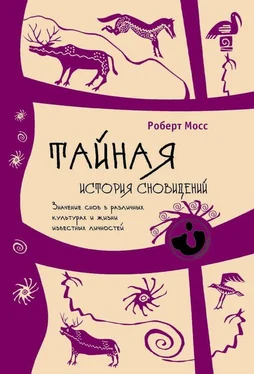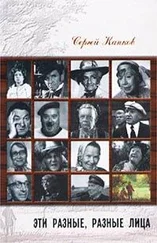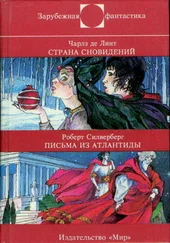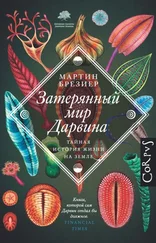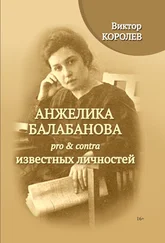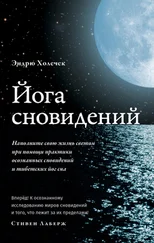[60] Глава, вошедшая в издание 1914 года, называется «Толкование символов в сновидениях – некоторые типичные сновидения», см. Freud, The Interpretation of Dreams , trans. John Strachey (New York: Avon, 1965), pp. 385–439.
[61] Ibid., p. 405.
[62] C. G. Jung, Memories, Dreams, Reflections , ed. Aniela Jaffé (New York: Vintage, 1965), pp. 161–162.
[63] Freud, The Interpretation of Dreams , pp. 138–151.
[64] Фрейд написал о своем желании сделать такую «табличку» в 1900 году в письме к Вильгельму Флиссу (который настойчиво просил его бросить курить). См. Louis Breger, Freud: Darkness in the Midst of Vision (New York: John Wiley & Sons, 2000), p. 143.
[65] Freud, The Interpretation of Dreams , p. 139.
[66] Ibid., 139–140.
[67] Ibid., 141.
[68] Ibid., 144.
[69] Основным источником описания симптомов и лечения рака у Фрейда являются медицинские записи его хирурга Г. Пичлера (история болезни профессора Зигмунда Фрейда), пер. Л. Леви, см. Max Schur Papers (3–85R–13), в Библиотеке Конгресса. Насколько я знаю, первым человеком, установившим взаимосвязь между сном про Ирму и раком ротовой полости у Фрейда, был аргентинский хирург-онколог и психоаналитик Хосе Шавельзон, см. его монографию: José Schavelson, Freud, un patiente con cancer (Buenos Aires: Editorial Paidos, 1983).
[70] Из медицинских записей Г. Пинчлера.
[71] В целях детального и полезного изучения гипотезы об онкомаркерах см. Thomas R. Hersh, “How Might We Explain the Parallels Freud’s 1985 Irma Dream and His 1923 Cancer?“ Dreaming 5 , no. 4 (December 1995): 267–287.
Глава 3. Божественная природа сновидений
[1] Alain Daniélou, Hindu Polytheism (London: Routledge & Kegan Paul, 1964), p. 150.
[2] Lawrence C. Watson, “Dreaming as World View and Action in Guajiro Culture”, Journal of Latin American Lore 7 , no. 2 (1981): 239–254.
[3] Marc de Civrieux, Watunna: An Orinoco Creation Cycle , trans. David M. Guss (San Francisco: North Point Press, 1980), p. 23.
[4] Для анализа сексуальных аспектов различных теорий зачатия Будды см. Serinity Young, Courtesans and Tantric Escorts: Sexualities in Buddhist Narrative, Iconography, and Ritual (London: Routledge, 2004), pp. 67–72.
[5] T. S. Eliot, “Burnt Norton”, in Four Quartets ; Exodus 24:17.
[6] Тацит «История».
[7] Имя Серапис восходит к египетскому Асар-Хапи, сочетающему в себе имена Осириса и быка Аписа.
[8] Michel Chauveau, Egypt in the Age of Cleopatra , trans. David Lorton (Ithaca, NY: Cornell University Press, 2000), pp. 123–126.
[9] Тацит «История».
[10] Там же.
[11] Элий Аристид, Речь 45.
[12] Там же.
[13] Ригведа.
[14] Wendy Doniger O’Flaherty, Dreams, Illusion, and Other Realities (Chicago: University of Chicago Press, 1984), p. 15.
[15] Бхадараньяка-упанишада, 4.3, 9–10.
[16] Там же, 4.3.11–12.
[17] Там же, 4.3.13.
[18] O’Flaherty, Dreams, Illusion , pp. 141–143.
[19] Ibid., pp. 143–146.
[20] Sudhir Kakar, Shamans, Mystics, and Doctors: A Psychological Inquiry into India and Its Healing Traditions (Boston: Wisdom Publications, 1999), p. xi.
[21] Serinity Young, Dreaming in the Lotus: Buddhist Dream Narrative, Imagery, and Practice (Boston: Wisdom Publications, 1999), p. xi.
[22] Mircea Eliade, Yoga: Immortality and Freedom , trans. Willard R.Trask (Princeton, NJ: Princeton University Press, 1973), p. 181.
[23] Serinity Young, “Dream Practices in Medieval Tibet”, Dreaming 9 , no. 1 (March 1999): 34, 38n41.
[24] Ibid., pp. 35.
[25] Garma C. C. Chang, trans., The Handred Thousand Songs of Milarepa (Boston: Shambhala, 1989), p.489.
[26] Ibid., p. 484.
[27] Ibid., p. 496.
[28] Francesca Fremantle, Luminous Emptiness: Understanding the Tibetan Book of the Dead (Boston: Shambhala, 2001).
[29] Aleida Assmann, “Engendering Dreams: The Dreams of Adam and Eve in Milton’s Paradise Lost ”, in Dream Cultures: Explorations in the Comparative History of Dreaming , ed. David Shulman and Guy G. Stroumsa (New York: Oxford University Press, 1999), p. 291.
[30] “The Apocalypse of Adam”, trans. George W. MacRae, in The Nag Hammadi Library , ed. James M. Robinson (New York: Harper & Row, 1977), pp. 256–264.
[31] Josephus, Jewish Antiquities , trans. H. St. J. Thackeray (Cambridge, MA: Harvard University Press, 1967), p. 205.
[32] Isabel Moreira, Dreams, Visions, and Spiritual Authority in Merovingian Gaul (Ithaca, NY: Cornell University Press, 2000), p. 42.
[33] Joel Covitz, Visions of the Night: A Study of Jewish Dream Interpretation (Boston: Shambhala, 1990), p. 58.
[34] Свободная адаптация см. A. J. Arberry, Tales from the Masnavi (London: Curzon Press, 1994), pp. 267–268.
[35] Richard C. Trexler, The Journey of the Magi: Meanings in History of a Christian Story (Princeton, NJ: Princeton University Press, 1997), p. 37.
[36] Amir Harrak, trans., Chronicle of Zuqnin, AD 488–775 (Toronto: Pontifical Institute of Mediaeval Studies, 1999).
[37] John J. Rousseau and Rami Avav, Jesus and His World: An Archeological and Cultural Dictionary (Minneapolis: Fortress Press, 1995), p. 33.
[38] N. H. Baynes, Constantine the Great and the Cristian Church (Oxford: Oxford University Press, 1972), p. 3.
[39] Robin Lane Fox, Pagans and Christians (New York: Albert A. Knopf, 1989), pp. 613–614.
[40] Eusebius’ Life of Constantine , trans. and ed. Averil Cameron and Stuart G. Hall (Oxford: Clarendon Press, 1999).
[41] Ibid.
[42] George Pitt-Rivers, The Riddle of the “Labarum”, and the Origin of Christian Symbols (London: George Allen & Unwin, 1966), pp. 28–29.
[43] Eusebius’ Life of Constantine .
[44] Lane Fox, Pagans and Christians , p. 618.
[45] Ibid., pp. 642–653.
[46] Jay Bregman, Synesius of Cyrene, Philosopher-Bishop (Berkeley: University of California Press, 1982), p. 148.
[47] Ibid., p. 76.
[48] Synesius, Letter 137 in Augustine FitzGerald, ed. and trans., The Essays and Hymns of Synesius of Cyrene (Oxford: Oxford University Press, 1930); Bregman, Synesius, pp. 26, 32–33.
[49] Bregman, Synesius , pp. 60–61.
[50] Все цитаты из трактата Синесия о сновидениях см. FitzGerald, Essays and Hymns of Synesius.
[51] A. A. Nock, Conversion (Oxford: Oxford University Press, 1933).
[52] Synesius, On Providence ; Bregman, Synesius, pp. 66–72.
[53] Socrates Scholasticus, “The Murder of Hypatia”, in A Treasury of Early Christianity , ed. Anne Fremantle (New York: Viking, 1953), pp. 379–380.
Читать дальше
Конец ознакомительного отрывка
Купить книгу
